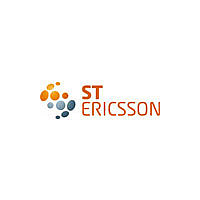ISP1506ABS-T ST-Ericsson Inc, ISP1506ABS-T Datasheet - Page 30

ISP1506ABS-T
Manufacturer Part Number
ISP1506ABS-T
Description
IC USB TXRX HS 24-HVQFN
Manufacturer
ST-Ericsson Inc
Type
Transceiverr
Datasheet
1.ISP1506ABS.pdf
(79 pages)
Specifications of ISP1506ABS-T
Number Of Drivers/receivers
1/1
Protocol
USB 2.0
Voltage - Supply
1.65 V ~ 3.6 V
Mounting Type
Surface Mount
Package / Case
24-VQFN Exposed Pad, 24-HVQFN, 24-SQFN, 24-DHVQFN
Lead Free Status / RoHS Status
Lead free / RoHS Compliant
- Current page: 30 of 79
- Download datasheet (402Kb)
NXP Semiconductors
ISP1506A_ISP1506B_1
Product data sheet
For more information, refer to
Rev.
b. Host chirp: If the host does not detect the peripheral chirp, it must continue
c. High-speed idle: The peripheral must detect a minimum of Chirp K-J-K-J-K-J. Each
1.1”.
than 7 ms after reset time T
up its clock within 5.6 ms, leaving 200 s for the link to start transmitting the
Chirp K, and 1.2 ms for the Chirp K to complete (worst case with 10 % slow clock).
asserting SE0 until the end of reset. If the host detects the peripheral Chirp K for
no less than 2.5 s, then no more than 100 s after the bus leaves the Chirp K
state, the host sends a TXCMD (NOPID) with an alternating sequence of Chirp Ks
and Chirp Js. Each Chirp K or Chirp J must last no less than 40 s and no longer
than 60 s.
Chirp K and Chirp J must be detected for at least 2.5 s. After seeing that
minimum sequence, the peripheral sets TERMSELECT = 0b and OPMODE[1:0] =
00b. The peripheral is now in high-speed mode and sees !squelch (01b on
LINESTATE). When the peripheral sees squelch (10b on LINESTATE), it knows
that the host has completed chirp and waits for high-speed USB traffic to begin.
After transmitting the chirp sequence, the host changes OPMODE[1:0] to 00b and
begins sending USB packets.
Rev. 01 — 30 May 2007
Ref. 3 “UTMI+ Low Pin Interface (ULPI) Specification
0
. If the peripheral is in low-power mode, it must wake
ISP1506A; ISP1506B
ULPI HS USB OTG transceiver
© NXP B.V. 2007. All rights reserved.
30 of 79
Related parts for ISP1506ABS-T
Image
Part Number
Description
Manufacturer
Datasheet
Request
R

Part Number:
Description:
IC FILTR/CODEC 14BIT AUD 30TSSOP
Manufacturer:
ST-Ericsson Inc
Datasheet:

Part Number:
Description:
IC FILTR/CODEC 14BIT AUD 30TSSOP
Manufacturer:
ST-Ericsson Inc
Datasheet:

Part Number:
Description:
IC USB HUB CONTROLLER HS 80-LQFP
Manufacturer:
ST-Ericsson Inc
Datasheet:

Part Number:
Description:
IC USB HOST CONTROLLER 128-LQFP
Manufacturer:
ST-Ericsson Inc
Datasheet:

Part Number:
Description:
IC USB OTG CONTROLLER 64-LQFP
Manufacturer:
ST-Ericsson Inc
Datasheet:

Part Number:
Description:
IC USB PERIPH CONTROLLER 64HVQFN
Manufacturer:
ST-Ericsson Inc
Datasheet:

Part Number:
Description:
IC USB HOST CTRL FULL-SPD 48HVQF
Manufacturer:
ST-Ericsson Inc
Datasheet:

Part Number:
Description:
IC USB CTRL HI-SPEED 64HVQFN
Manufacturer:
ST-Ericsson Inc
Datasheet:

Part Number:
Description:
IC USB CTRL HI-SPEED 64TFBGA
Manufacturer:
ST-Ericsson Inc
Datasheet:

Part Number:
Description:
IC USB CTRL HI-SPEED 64HVQFN
Manufacturer:
ST-Ericsson Inc
Datasheet:

Part Number:
Description:
IC USB CTRL SNGL CHIP 64TFBGA
Manufacturer:
ST-Ericsson Inc
Datasheet:

Part Number:
Description:
IC USB HOST/DEVICE CTRLR 64-LQFP
Manufacturer:
ST-Ericsson Inc
Datasheet:

Part Number:
Description:
IC USB CTRL HI-SPEED 128TFBGA
Manufacturer:
ST-Ericsson Inc
Datasheet:










